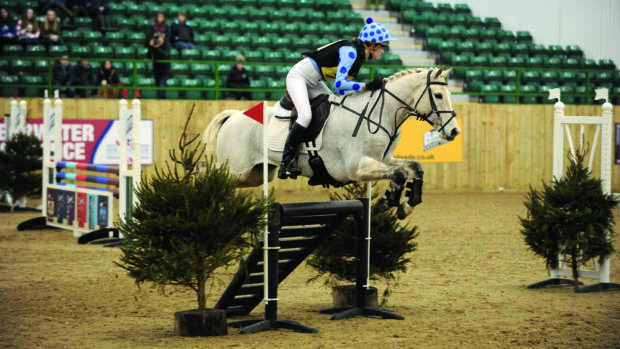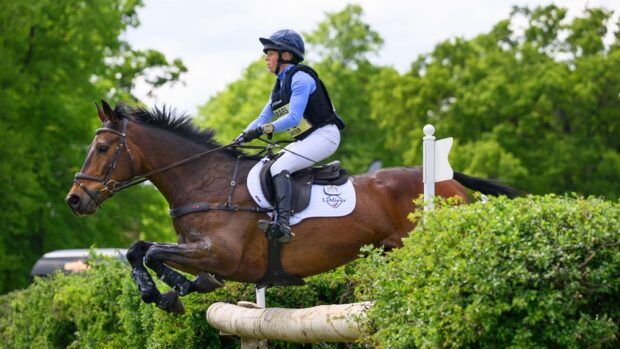At the 2019 renewal of the International Eventing Forum, held at Hartpury (4 February), Richard Waygood (pictured) shared some of his expertise on how to help improve performance and the chances of success when showjumping and riding across country.
A former riding master of the Household Cavalry, Richard (or Dickie as he is more commonly known) has been the performance manager for the British eventing squad since November 2016 and was previously the performance manager for the British dressage squad for seven years. He has ridden and been placed at four-star (now five-star) level and is also a top British Eventing (BE) accredited coach.
Here’s his top tips for success…
1. If someone gets the basics right in any sport, when things go wrong you can revert to those basics to help get you out of trouble.
2. During the warm-up riders should focus on the horse being in front of their leg, that the horse is laterally supple, whether their brakes work and whether the rider is in balance.
3. I have three golden rules for horse and riders while jumping. Whenever something goes wrong in the jumping phases, the rider usually admits that one of these three following rules has been broken:
Rule one: The rider must sit in balance both over the fence and when landing from it.
Imagine a child cycling down a hill with stabilisers on their bike to help them balance. When a horse loses balance, they turn to their rider to help rebalance them. This is only possible if the rider is in proper balance and it is a fine line between being in and out of it. For example, when you reward a horse with a pat, just lower your hand down, keeping your body up — don’t look down to praise your horse, as suddenly 2st of extra weight will be cast over their shoulders.
Rule two: The horse must have the correct way of going for the obstacle in hand.
By this I mean that the horse must be in self-carriage. The neck is the horse’s fifth leg in times of trouble, so it is imperative that the horse has his head, withers and neck up and his hind-leg engaged.
Rule three: The rider must provide the correct line
If the horse understands where he’s going, he will hold the line.
4. If you ride a horse to a fence trying to avoid a mistake, you will inevitably be riding in neutral, and will therefore be more likely to end up making a mistake.
5. Allow the horse the use of his neck, this will help him to come up and over his back and light in the rein.
6. The rider should look up and over the fence and shouldn’t be too quick in their fold.
7. Every aspect of jumping your horse should start and finish with a quality canter — don’t ‘flop’ after the final fence of the course or exercise you’re jumping. Re-instate the correct way of going, give them a pat and then finish the exercise.
8. The horse’s back legs should follow his front legs to ensure straightness.
9. It’s very easy when cross-country schooling, to teach a horse how to run out — remember you are training your horse, not trying to trick them. For this reason, I always make sure there are flags on cross-country fences we’re schooling over to teach the horse to look for them when jumping.
10. Your horse shouldn’t come around a corner to a fence like a banana — this inhibits their jump. Try to think of them as being on railway tracks on the approach to a fence.
Article continues below…
You might also be interested in:

Subscribe to Horse & Hound magazine today – and enjoy unlimited website access all year round
11. Put the ingredients into your horse in the preparation for the fence, but once there, allow him to use himself — you don’t have to over-protect them, else they are unlikely to learn.
12. When landing, the rider shouldn’t nod their head — this is a sign that they’ve lost balance over the fence.
13. A rider should always use their voice if they need to, either if it’s to steady or sharpen up.
14. A good exercise I use to ensure a rider is turning the horse with their leg and not their hand is to ask them to ride with their reins in one hand while cantering a 10m circle.
15. Riders will always be rewarded for forward thinking.
For all the latest equestrian news and reports, don’t miss Horse & Hound magazine, out every Thursday




